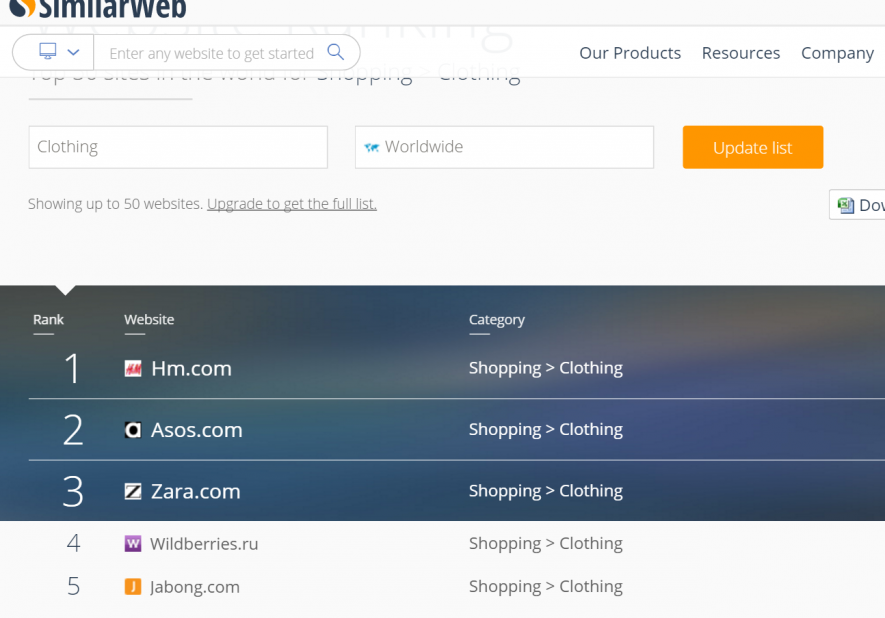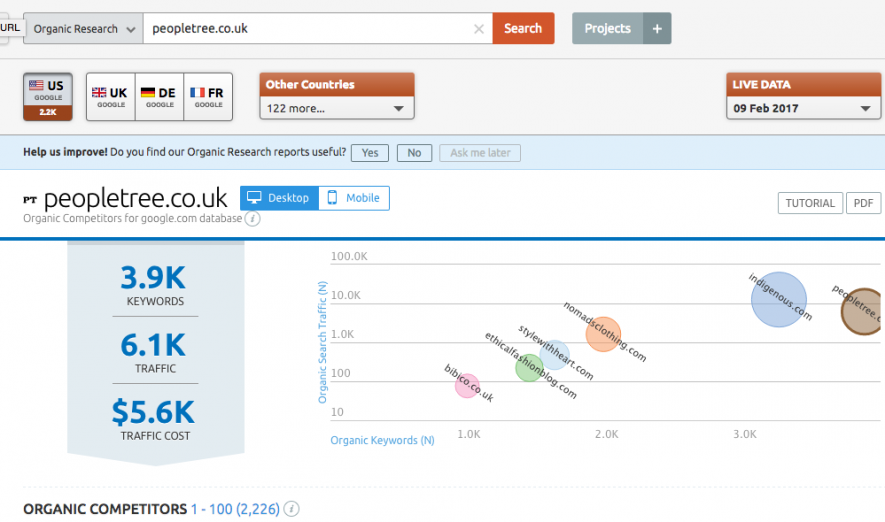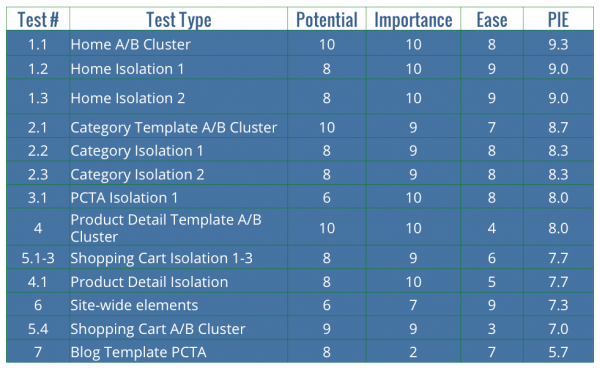Vahe Arabian Tips on Finding Website Optimization Opportunities for Your Business 40 Wow-Score The Wow-Score shows how engaging a blog post is. It is calculated based on the correlation between users’ active reading time, their scrolling speed and the article’s length. Learn more Tips on Finding Website Optimization Opportunities for Your Business
- 62
- 32
- 3
- 20
Today's digital marketers today are increasingly tasked with addressing business issues, but also justifying and improving the return on investment for the work they deliver on an ongoing basis.
Despite this and according to Smart Insights:
According to Smart Insights study, 2/3 to 3/4 of the surveyed respondents have stated that there is no recorded digital strategy in their business.
The challenge of running digital marketing campaigns is being able to identify the business areas that you can make the most impact towards. If most of your marketing efforts are spent online, then you’ll also want to make sure that you’re getting the most return from your time and drive them to the central point of your company's online presence i.e. your website. That’s why you’ll need a framework that can help you be effective and constantly build on your previous digital marketing efforts.
This post will outline a 3 step process on how to find website optimization opportunities to help the business HIPPO (Highest Paid Person's Opinion) and digital marketer in your organization, keep things in perspective and move the needle forward.
Step 1. Audit your industry, competitors, and website
Knowing the context, purpose, and perception of your industry, competitors, and website (in the bigger scheme of things) will help you to see your current positioning and feed that data towards building your strategy.
There are several tools can be used to help you mine industry, competitor and website level information for uncovering company strengths, weaknesses, opportunities and threats online.
Industry level information
-
Similar Web – Offering the top ranked trafficked websites for a selected niche, which can also be filtered by location
 Competitor analysis using Similar Web Top Industry site rank
Competitor analysis using Similar Web Top Industry site rank
- Google Display Planner Tool – Allowing you to see site advertisement placement ideas (for large audience sites) across their advertising network. It’s another way to see leading sites for your niche and commonalities of that audience
-
Google Trends &/or industry level news – Demand or decline of new topic searches using Google Trends. Or you can use Google Search to find industry focused associations and news sites for trending news
-
Buzzsumo – Useful to find the topic influencers for a specific field and the topic they create and promote in addition to popular content based on your search.
Competitor level information
-
SEMrush – Using your website (or competitor domain) click on the competitors' tab and visually (via the bubble graph like below) or via the table, analyze the top competitors based on the overall number of commonly listed ranking keywords
 SEMrush Organic Research reports
SEMrush Organic Research reports
- Majestic – Or other link research tools can help you look at the type of sites that are linking back to your competitors, helping you uncover their online promotional efforts. Doing a competitor analysis can allow you to see the linking strategy commonalities and gaps across the analyzed set.
-
Google Alerts (or other mentioning tools) – Monitor online mentions of your brand and your competitors.
Website level information
-
Google Search operators – see how your site is indexed to find underlying technical issues
-
Google Search Console/Bing Webmaster Tools – see the search engine's perspective on how they see the overall health of your site
-
URL Profiler – For auditing your content amongst seeing overlaying other metrics that can give you a holistic picture of your site performance
-
Screaming Frog – For conducting full technical site audits
-
SEMrush or Google Keyword Planner for keyword research – identifying topics and keywords to optimize your website. You can also use SEMRUSH’s page level analytics to see the keywords driving traffic to a certain page and from this determine its relevancy.
Step 2. Build out a strategy
With the information you collected from your audit/s, create the blueprint for achieving your business objectives (or challenges) as it will outline the goals (steps for addressing your challenges), KPI’s/Metrics (accountability & success measures), segments (target audience) and timelines for your digital marketing campaign.
When building out your strategy, start off by focusing on the goals or your business objectives. The easiest way to outline goals is by asking yourself these four questions:
- What would you like more?
- What do you like less of?
- What would you like to change?
- What would you like to keep the same?
For example, if you have a women's fashion e-commerce store and your objective is to get more revenue, then one of the goals you can have is to increase organic search sales (adding a specific segment) by X, as you know that your site is getting proportionally fewer sales than other channels by industry comparison.
Once this has been established, then map out your metrics/followed by your segments to ensure you can reach your audience as best as possible.
To continue from the example above, the KPI for this goal could be revenue or number of transactions with the segment focus on shopping enthusiasts who regularly read entertainment news, as they might be people who tend to constantly look for trendy/seasonal clothing.
One thing that most enterprise businesses fail at realizing is the growth stage which their site might be at. New sites need to especially be wary of this as it might not be realistic to focus on certain KPI’s, due to the sites/companies limitations/weaknesses and threats outlined during an audit i.e. lack of traffic, resources
You can use the following digital analytics stages of success (from Avinash Kaushik) to determine the stage your site is at, and start using those associated metrics/KPI's first until you see the signs to move onto the next stage.
Step 3. Test, Identify, Prioritise & Execute Improvement
Now it is time to work towards optimizing your website, using a data-driven approach. Piece everything together using analytics data and the PIE framework!
In a nutshell, the PIE framework is based evaluating three different factors (potential, importance and ease) to help you understand which pages/elements are going to be the most beneficial & easiest to implement at a glance.
Hopefully, from here, you can find low hanging fruit opportunities, for running successful tests and therefore get internal buy in to conduct more of these optimization tests moving forward.
Place a score of between 1-10 for each page or test type and pull together the average to then prioritize your efforts. Check out the example below.
 Use the PIE framework for prioritizing website optimization opportunities
Use the PIE framework for prioritizing website optimization opportunities
Matthew Barby summarizes his process for prioritizing project improvements very well which I also use, however, I have added an additional step after no.7 in order to make clear the hypothesis for the change being optimized/tested for. Here are the steps below:
-
Identify the goal that you’re trying to achieve
-
Outline all of the pages within your website that can influence that goal
-
Rank the pages based on their importance within the process
-
Gather data for each of the pages
-
Highlight underperforming pages within the process
-
Uncover the major contributing reasons as to why these pages are underperforming
-
Outline some potential changes that could be made
-
Form a hypothesis on what the potential changes made will result. A better educated guess can be made using the potential changes
-
PIE score the recommended changes
-
Prioritise and execute all projects that meet your specific PIE criteria.
Once you go through the steps, measure/analyse the results, draw conclusions and either follow the next sequence of improvements (if there are more priorities in you PIE table), or start again from step 1 to continually tackle new business objectives and goals.
I hope this process has not only given you a structure for running digital marketing campaigns but can help you be more enthusiastic and optimistic in uncovering ongoing website optimisation opportunities to get more out of your website (especially for Organic Search).
Following the process can help you spend less time analysing aimless data and more time towards doing work which moves you closer towards your objectives.



